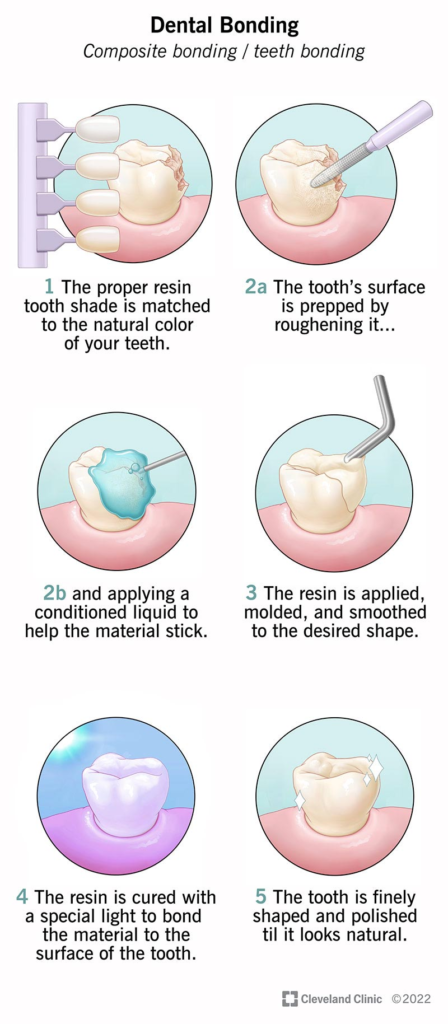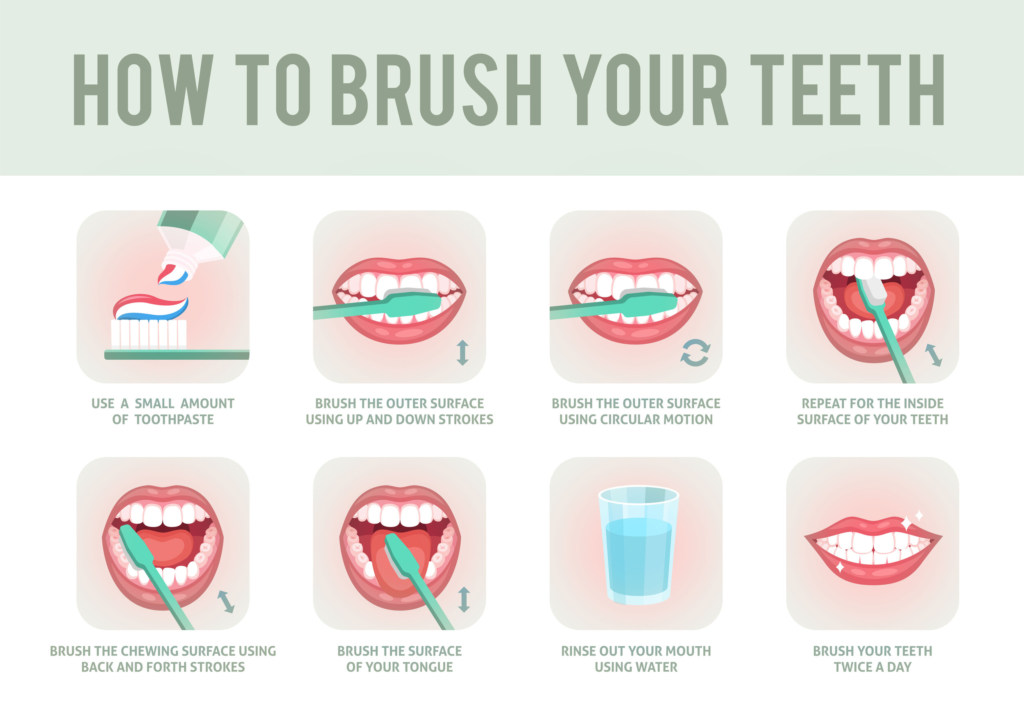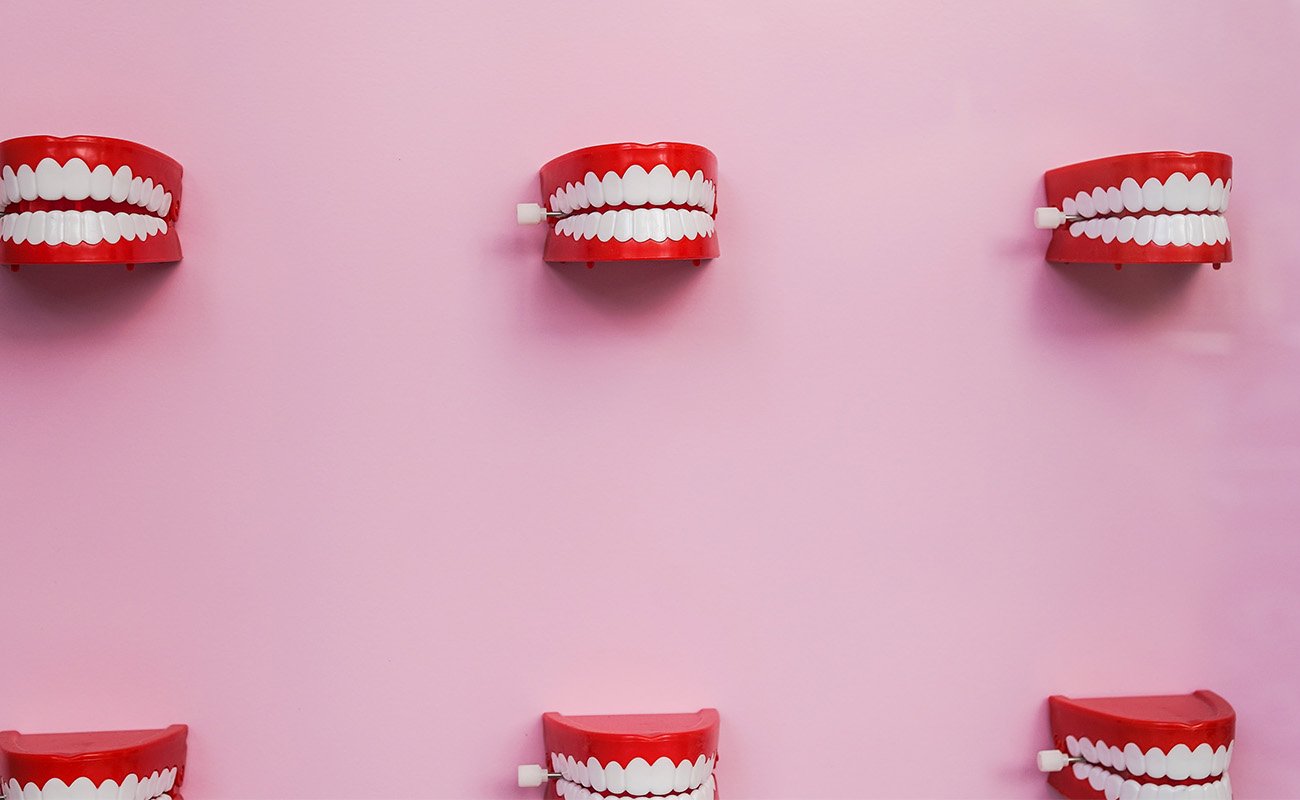Are you pondering over how to fix a smile without braces and curious about what options lie beyond the traditional metal brackets and wires? Do alternatives exist that can grant you the smile you’ve always wanted, minus the braces?
In this article, we’ll explore various methods in dental care that offer promising results in smile correction without the need for braces. From the latest in clear aligner technology to cosmetic dentistry options like veneers, we’ll guide you through the choices available to help you make an informed decision on how to perfect your smile, braces-free.
Dental Bonding
Dental bonding is a fast and convenient way to improve your smile without having to go through the time and hassle of braces. This procedure uses a tooth-colored material to cover any chips, cracks, or discolorations on your teeth that can be distracting or even embarrassing. Bonding hardens quickly when it comes in contact with ultraviolet light, making it a quick procedure with instant results.
This procedure can be done in one office visit and, depending on the size of the area needing bonding, generally takes no longer than an hour. In contrast to braces that take months or years to show improvement and constant maintenance, bonding provides a direct way to unleash your confident smile.
Dental bonding can have its benefits, ranging from quick and easy treatment to a low cost. However, one of the major drawbacks of using this type of treatment is that it is not a long-term solution. It typically only lasts for several years with proper care.
See our article: Cost of Dental Bonding

Veneers
Veneers are a dental solution designed to improve the appearance of your teeth by covering visible imperfections. These thin, custom-made shells, crafted from porcelain or composite resins, are bonded to the front of your teeth. They’re effective for correcting issues like wear, discoloration, chips, and cracks, offering a more uniform and stain-resistant appearance. Veneers can significantly enhance your smile and are known for their durability, often lasting up to fifteen years with proper care.
However, it’s important to consider that veneers permanently alter your teeth, as a portion of the tooth surface must be removed for their application. This means that once you opt for veneers, the decision is irreversible. Additionally, some people may experience temporary sensitivity to cold following the procedure, which typically diminishes over time.
See our article: Teeth Veneers Pros and Cons.
Worth Knowing
The study published in the Journal of Dental Research shows that patient factors, rather than dentist-related factors, significantly influence the longevity of porcelain veneers. It was found that 53% of these veneers remained intact and did not require any re-intervention for up to 10 years.
Clear Aligners
At-home clear aligners are a great alternative to traditional braces. They are custom-made, removable trays that are worn over the teeth to gently move them into alignment.
These clear aligners have become increasingly popular due to their aesthetic advantages. They provide a much more discreet solution than metal brackets and wires and are also more comfortable and easier to clean. At-home aligners also mean no regular in-person dental visits and teeth can be straightened within 4-6 months in mild to moderate cases, which is quicker than traditional braces.
The price of clear aligners versus that of traditional braces is also a reason to consider opting for these to treat your teeth. Some clear aligner companies offer discounts of over 60% on traditional braces costs and often have seasonal price offers that increase these savings even further.
It’s important to keep in mind that clear aligners do need to be removed every time you consume food or beverages and teeth need to be rinsed clean before replacing the aligner. For best results, you should wear the aligner for 20-22 hours per day.
See our article: Invisible Braces for Kids.
Veneers or Aligners – Which Option Should You Choose?
When deciding between veneers and aligners, you should consider your specific dental needs and aesthetic preferences. If you’re looking for just a cosmetic fix then veneers may be your best option, as they offer a quick and effective solution for enhancing the appearance of teeth, covering imperfections such as discoloration, chips, and cracks. On the other hand, if there are serious structural issues such as crooked or crowded teeth then clear aligners are the better choice as they provide a more comprehensive approach to orthodontic treatment, gradually straightening teeth and correcting alignment issues.
Both options have their advantages and limitations. Veneers are a permanent solution that requires irreversible alteration of the tooth structure, while aligners offer a removable and less invasive treatment option. Ultimately, the decision between veneers and aligners should be based on your individual preferences and goals.
See our article: Aligners Vs Veneers.
Can You Fix Your Smile Naturally?
With good oral habits, it is possible to not only improve the look and health of your smile but also your overall well-being. Brushing your teeth twice a day and flossing daily are essential for effectively removing plaque, bacteria, and food particles that can harbor in the mouth and cause cavities. Incorporating an antibacterial mouthwash into your routine helps to further fight off any germs that may have been missed during brushing or flossing.
In addition to brushing and flossing, eating healthy foods is crucial for maintaining a strong set of teeth. Nutrition rich in calcium, phosphorus, and vitamins A, C, and D are beneficial for reinforcing enamel and providing extra protection against decay caused by acidic or sugary foods. Incorporating fruits, vegetables, and dairy products into your diet can also help to keep your gums healthy. Cutting down on sugar intake decreases the amount of wear-and-tear on the teeth from acids produced by plaque; it has been linked with higher risks of tooth decay as well as gum disease if left unmanaged.
See our article: How to Fix a Smile Without Braces?
Finally, regular visits to a dental professional are quite important – they can provide more in-depth guidance when it comes to choosing the best oral hygiene products that work specifically for you. These professionals can also perform routine examinations that will allow them to detect any underlying problems such as cavities or gum infections before they become more serious issues.
With dedication and regular upkeep, you will increase your chances of maintaining the perfect smile naturally.

Which Aligners to Choose?
Deciding on the best aligners can be challenging given the variety of options available, each with its own designs, materials, and features. It’s important to consider the cost and ensure it fits within your budget before making a choice. Additionally, gathering feedback from other users can provide valuable insights into the effectiveness and satisfaction levels of different aligner products. Below, you’ll find reviews for some of the top aligner brands available:
Byte is a well-known brand that offers a lifetime guarantee for your aligners. This means that if your teeth don’t stay in the desired treatment position afterward, you’ll receive additional impression kits, treatment plans, and sets of aligners at no additional cost to correct any misalignments.

Byte
An affordable option with refundable impression kits, free HyperByte, and a Byte for Life guarantee.
Check out Byte AlignersNewSmile is one of the newest aligner brands on the market and is known for its affordability. When you purchase their aligners, you receive an impression kit, whitening foam, aligners, and retainers. This brand also provides monthly payment plans without requiring any initial payments, offers a video call option with a specialist to assist with mouth impressions, and has a user-friendly online assessment process.

NewSmile
Affordable at-home treatment with positive reviews offering superior look and comfort.
Check out NewSmile AlignersHow to Fix a Smile without Braces: Conclusion
In conclusion, exploring alternatives to traditional braces offers a range of options for achieving a confident smile. Whether opting for veneers, clear aligners, or other cosmetic dental treatments, people can tailor their approach to address specific dental needs and aesthetic preferences.
Frequently Asked Questions
How Can I Change the Shape of My Smile Without Braces?
There are a variety of non-traditional methods available to change the shape of one’s smile without the need for braces.
For example, certain orthodontic products such as teeth aligners, or retainers may help to shift your teeth and improve the aesthetic of your smile.
Additionally, professional teeth whitening and porcelain veneers can also provide dramatic transformations in reshaping unsightly smiles where there are no major issues with misalignment.
How Can I Change the Shape of My Smile Naturally?
Incorporating healthy foods into your diet and drinking plenty of water help to nourish teeth and promote good oral hygiene.
Additionally, limiting sugary and acidic foods lessens the risk of cavity formation, protecting the shape of your teeth from decay.
Brushing and flossing daily also decreases the chance of cavities while removing plaque buildup. A regular visit to a dental specialist is an essential part of maintaining a healthy smile too.
Sources
Burke, F. J. T., Lucarotti, P. S. K., Ten-year outcome of porcelain laminate veneers placed within the general dental services in England and Wales; J Dent, 2009. DOI: 10.1016/j.jdent.2008.03.016. Available online at: https://pubmed.ncbi.nlm.nih.gov/18538912/
Matos, A. B., Tosi Trevelin, L., Ferreira da Silva, B. T., Fávaro Francisconi-Dos-Rios, L., Kfouri Siriani, L., Cardoso, M. V., Bonding efficiency and durability: current possibilities. Braz Oral Res. 2017 Aug 28;31(suppl 1):e57. doi: 10.1590/1807-3107BOR-2017.vol31.0057. Available online at: https://pubmed.ncbi.nlm.nih.gov/28902237/
Mortazavi, M., et al. An updated systematic review on the effectivity of clear aligner therapy: A review. Journal of Craniomaxillofacial Research. (2020). Available online at: https://www.researchgate.net/publication/349579223_An_updated_systematic_review_on_the_effectivity_of_clear_aligner_therapy

